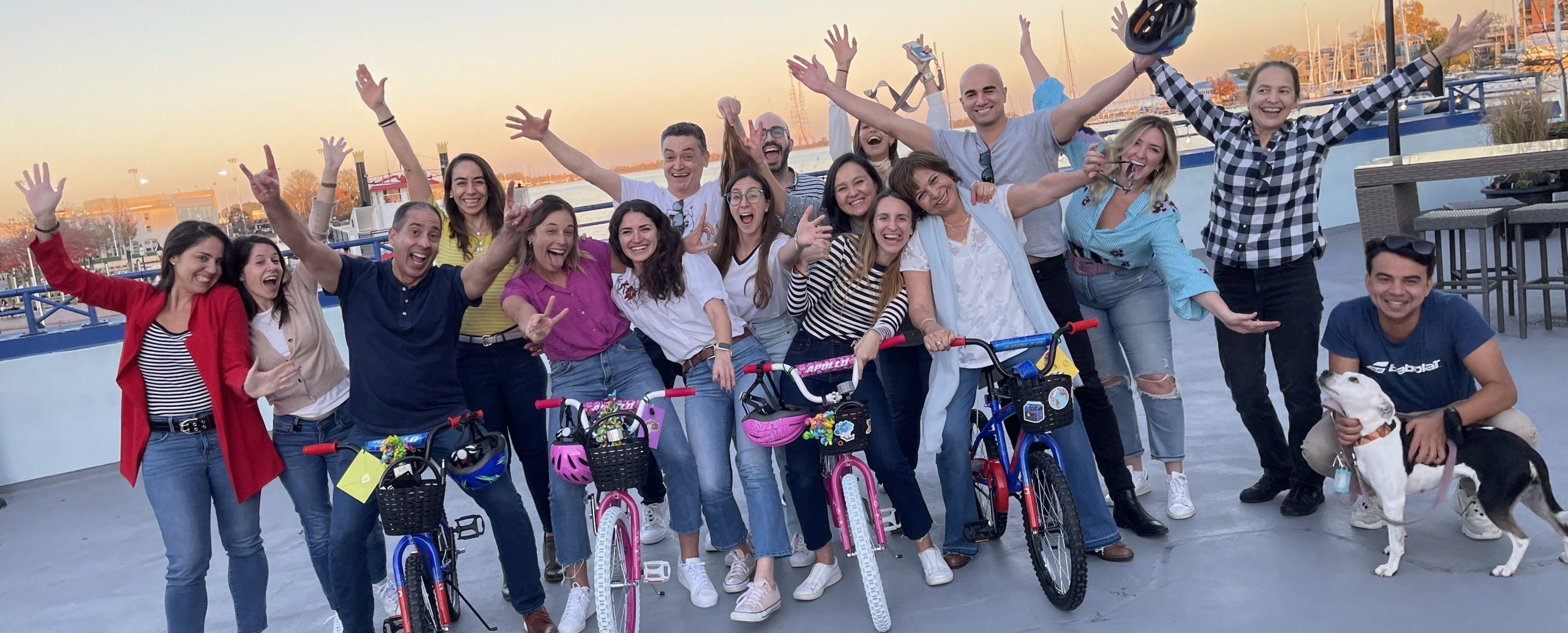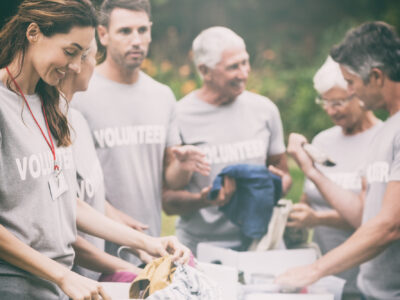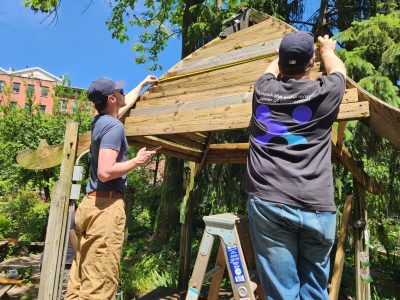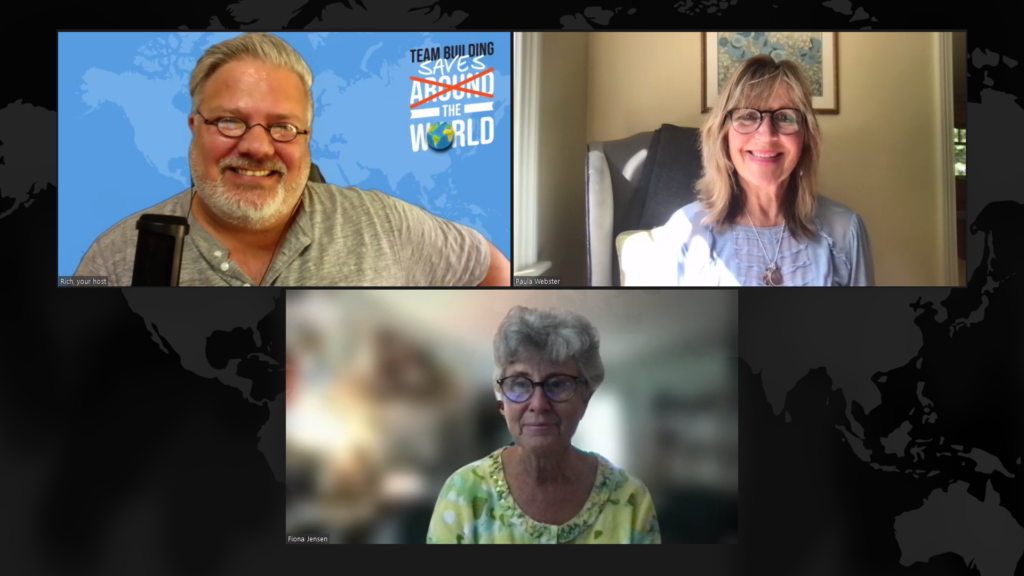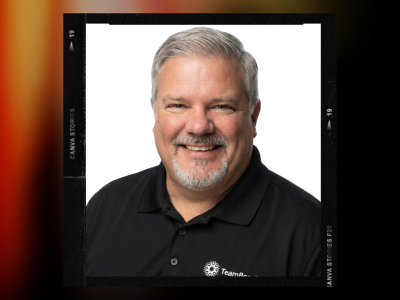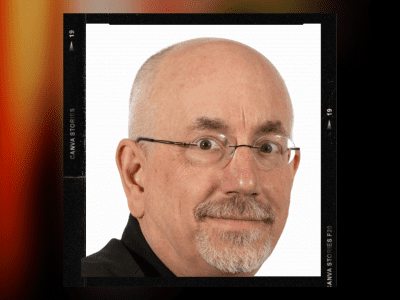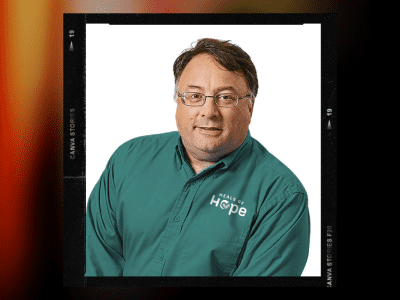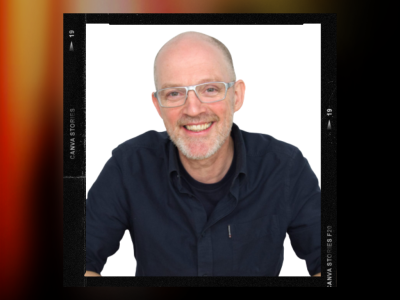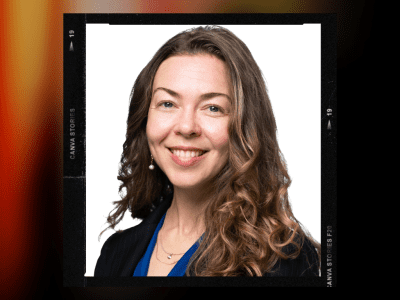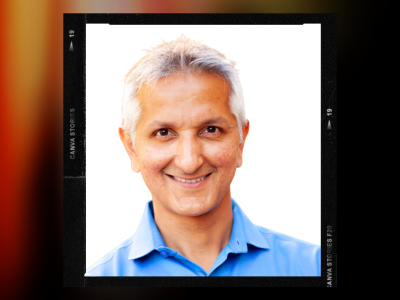STRONG TEAMS DON’T HAPPEN BY CHANCE 
The Benefits of Mindfulness Practice
w/Fiona Jensen and Paula Reardon-Webster
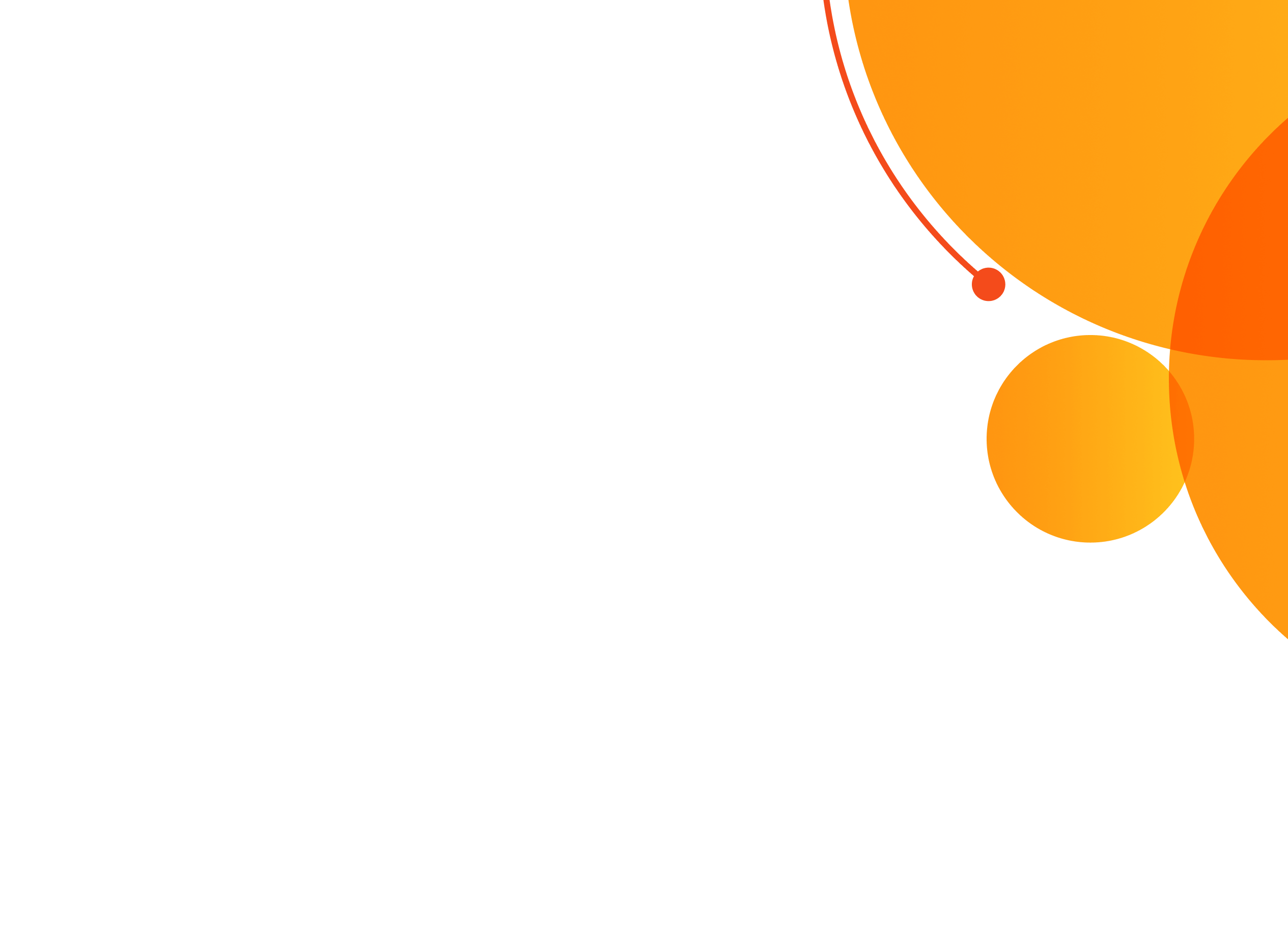
Use the buttons above to listen now.
Transcript - The Benefits of Mindfulness Practice
Rich: On this episode of team building saves the world.
Fiona: I like to use the analogy with mindfulness of like you you’re learning to play the violin. Right? You could take an eight week violin. And then never play again, and then you’re going to forget everything. Right? So mindfulness is a similar activity and he, like, all of a sudden stopped, went to his room, came back out again and came and put a snow suit on.
And she said, what was that all about? And he said, well, my Migdal was firing off and I needed to get it to settle down so that my prefrontal cortex would come and wrote me an email. Like, what are you teaching my kid? Like, I
Paula: it’s the same for the kids. As it is for the adults. And that’s a huge. Huge skill.
Fiona: Like what if politicians practice mindfulness? Like what if the guy that runs the podcast has a mindfulness practice? Right? What if we could all as human beings, just be a little more compassionate with ourselves. So that we can be more compassionate with other people.
Rich: Hello team. Once again, it’s me, your old friend, Richard and land host of team building saves the world. The show where I speak to the leaders and innovators of the team-building industry from all across the globe, trying to find out what about that industry is so important, especially in the world of today.
And today we’re focusing on mindful. With the founder and executive director of calmer choice, Fiona Jensen and mindfulness teacher and board member with calmer choice Paula Riordan Webster, the first and meet the send with thanks some thanks out to my supporters at team bonding. If your team is ready to experience teamwork, the power of play, then visit team bonding.com to learn more now team, please join me in welcoming wellness instructor, Paula Riordan, Webster and award-winning CEO of Calmer Choice
fiona Jensen.
That’s just a small collection of people I’ve gathered under my desk. Just to applaud you ladies.
Fiona: Amazing.
Rich: How are we doing today?
Fiona: Good. We’re excited to be here.
Rich: Thank you. Thank you so much for coming out, but now can you please, let’s start off, uh, just to tell my team out there, Fiona, if you can, about calmer choice and how it was that this whole thing came.
Fiona: Sure. So I actually love that this is about team building because calmer choice started 11 years ago when a group of concerned parents on Cape Cod gathered together to try and figure out how they could help some, uh, particular group of teenagers. Lost a couple of friends to suicide. And as a parent, with my own mindfulness practice, I watched my daughter and her friends really come undone and really have no way of navigating what they were working through.
And so we decided to take it amongst the, you know, on ourselves, try and raise some money so we can hire a Mindfulness teacher to work with these kids in this particular high school. And it was really honestly for me as a parent, um, it was my way of trying to reach out to my kid who was not wanting to listen to her mother as far as ways that might be helpful.
And I knew that if we could drop it into school, perhaps there was a. That my Lily would be able to benefit. So we raised enough money for one program and then much to my amazement. And this is where the team building came in. We started getting calls from other school districts on the Cape because we’re located on Cape Cod, Massachusetts saying they had an issue with mental health issues with their teenagers and middle schoolers.
And could we bring our stress reduction and mindfulness program? Into their schools. So, um, I gathered my best team building skills and we really just went to work on creating a nonprofit. None of us had ever been on a nonprofit board even. And, um, you know, today we’ve now worked with about 38,000 children and adults because we’ve morphed a little bit to be working with the business world.
And, um, which is how we got connected with you guys. So 38,000 people, since it was founded back in 2000 and. 10. So that’s a little history. Yeah. It’s pretty amazing. Yeah. \
Rich: Yeah. That’s a lot of people, but apparently for a very important cause. And Paula, what about you? How did you hear yourself at all?
Paula: Well, I, uh, let me see.
I come from a corporate accounting background basically, and I, uh, was, uh, wanting to, I had a mindfulness practice and I, I was drawn into a program at Lesley university. So getting out of health care fund. Into mindfulness studies. I got a master’s degree in mindfulness studies and some other trainings, and I know Fiona and I knew the chairman of the board, but I actually ran into the program director at a silent retreat.
And I, yeah, it’s an interesting networking tool. Okay. My sense is that whoever you end up sitting across from. Allowed to have conversation at the end. So we talked about, you know, calmer choice, needing some support on the finance committee and the board. And it went in through that door in 20 14, 15. And then I took the teacher training in 17 and have been teaching the adult population, although.
Trained with kids. Most of the people who are instructors with calmer choice were very much drawn to, um, working with youth, uh, working with the kiddos in the schools and had perhaps, you know, just not that interested in adults. So I started there and as that’s grown, I’ve continued to, to teach adults through Calmer Choice
Rich: so just to clarify for everybody out there who may not be familiar with your organization, we’re not just talking about high schoolers where we’re talking about kids of all ages. Right,
Fiona: right. What was interesting as we did, that’s a great question. We started with high schoolers and what we found within the first like semester of teaching was that this, these are the things we were teaching really could and should be taught to little people.
So we teach from preschool all the way to. You know, your 85 year old mom. Um, so really the whole spectrum. Uh, we have a specific school program that we work with the children with, and we have had really, um, we’ve been super fortunate in that we’ve been able to do research with Tufts and Yale and MIT to study the efficacy of our kid program.
And. Summer, we’ve got Tufts back involved, then we’re going to be looking at the efficacy of our adult program, which is primarily what Paul has been been teaching. So, yeah, it’s kind of amazing the opportunity you’ve been given as an organization,
Rich: going back to those early days, what kind of things were you seeing? Because that, so unfortunate to hear about the suicides.
Fiona: Super interesting. And when we did the research, we actually researched the, uh, So grades three through five, um, we found that there was a, and this was pre pandemic and things are only, so we found that, you know, 40% of kids in, in classrooms, and this was repeatedly over asked these questions were having issues sleeping at nighttime, like 46% of kids in a classroom are struggling with anxiety and a lot of kids having issues around dysregulation.
So not being able to regulate them. Um, what we found, which was really interesting was that the children, like if you were a teacher and you started your school year and you’re like, oh my God, this kid is going to really struggle. The one, actually my kids, the ADD kids, the ones that can’t sit still. Um, those were the kids that made the greatest gains.
In our program. So we found that kids that sort of started at a pretty level area. They stayed pretty level. Like there was no problems there, but the kids that really self-identified as having the most trouble around emotional regulation were really there. That made the greatest gains, which are super, because those were really the kids that we wanted to really help out.
And then with the teenagers, we found that a lot of these kids, they would initially sort of do the eye-rolling like, oh, this is really stupid. But then at the end, when you would ask them, are they using it? Stories like, yeah. You know, instead of punching a hole in my wall, I, when I got mad at my brother, I went into my room and I practice my mindfulness or a lot of kids in high school using it before sporting events.
Um, so before baseball games and gymnastics practices, and, and what’s really interesting as I bumped into some high school kids that had had our program in middle school, but hadn’t had it for a while at, at an event recently. And a lot of those kids were still using it. Helping themselves fall asleep at night, which is great.
That’s really what we wanted with the kids. We wanted to plant the seeds. Um, so that once they hit the high school, the hope was that we were going to be able to change the trajectory of some of these kids, as far as having tools in their toolbox to deal with the anxieties of being a teenager.
Rich: Is it just meditation straightforward? Or do you have other practices?
Fiona: No, we have other practices. And I’m going to kind of, I’m going to hand that over to Paula because I don’t teach the curriculum though. I probably could have, but I was raising money for the last 10 years. I’m going to pass that off to Paula, but it’s absolutely, that’s a tiny piece, an important piece, but not the primary focus necessarily of our, especially with them.
Paula: Fiona has been pretty busy. So she loves the program. Yeah. So we keep it very, very secular and accessible to anyone. Whether there’s some form of existing, you know, you use the word meditation, that connotes one thing, you know, and if you look up mindfulness, which sadly you’ll see people sitting there in a moodra, you know, with legs cross so that that’s not what we do.
And that’s sort of a stigma and the popularized secularized, mindfulness. We start with, you know, simply knowing where we are in our definition is paying attention intentionally. So not just like when you hear the car crash outside and you’re yeah. Attention is called, but directing your own attention intentionally to what’s happening right now, inside and outside you and trying to coordinate those two.
And we start with simply perhaps paying attention to your breath. Perhaps paying attention to your body, sitting, perhaps feeling your hands together, a lot of different avenues into just body sensations. Cause really a big thing with anxiety is we’re thinking, we’re thinking we’re ahead. We’re planning.
Remember, I plan, I’m a planner. I’m not a ruminator, but you know, every room is full of some, ruminators some planners. So, you know, people having the conversation. So just really paying attention to what’s here. My wanders what’s here, mine wonders. So. You may call it meditation. You may call it breathing.
You may call it sitting. It doesn’t really matter what we call it. And then the lessons are scaffolded. From there. We work with all of the sensations, sound, taste, touch, you know, all of them. And then we move into noticing, noticing our habits. I think he can patterns that I just spoke of noticing our perceptions, noticing our negativity bias.
We give people a good sense of like an, a foundation of neuroscience, what goes on in our brain and how do we, how do we kind of create our own stress with
Fiona: those habits?
Rich: I have to ask, how long does this take? I mean, what the programs themselves, how long were you.
Fiona: So that the little people programs are 20 minutes, twice a week, over eight weeks.
Okay. So the whole thing with mindfulness is it’s dosage, right? Like we could do a two hour workshop and you would be like, oh my God, that’s such great information. And then you’re not changing your habits. Right. So what we want with the adults. Two hours over a week, once a week for eight weeks. Is that right?
Yeah. Two hours once a week, create weeks for the kids. It’s 20 minutes, twice a week for eight weeks. And we, we encourage people to practice in between. So the actual. Sitting paying it like for the little guys it’s like, you know, full four or five minutes at the beginning, four or five minutes at the end.
And then there’s a lesson in the middle and with the adults, it’s, it’s certainly more practice than that because our capacity to sit still is greater for most adults, not all adults, but for most of us. So, and then, you know, the thing would, I like to use the analogy with mindfulness of like, you’re learning to play the violin, right?
You could take an eight week violin. And then never play again, and then you’re going to forget everything. Right? So mindfulness is a similar activity. So with the kids, they might get it in kindergarten, first grade third, and all the way through the grades. And it’s, it’s the same, same lessons, but the, um, a lot of the activities change as kids get older, but, um, You know, this is a practice, you know, I was sharing with Paula.
We were talking before this and I said, you know, I had a hard time last night because my dog’s leg is injured. And I worried, like I woke up at two in the morning and I spent all this time worrying about Pippa’s leg. And I said to her, it was like, it’s such useless energy. And Paula said, it’s a habit.
Worry is a habit. And I’m like, oh, I mean, and I run the organization, right? Like you would think two in the morning that I, I did practice my breathing. No Paulie. Okay. Proud of me and I did go back to sleep, but you know, as human beings, we are, that’s our default mode. Right is to ruminate worry plan, um, either about, you know, looking into the future or worrying about what we said to our boss or whatever, you know, and we’re not actually here right now with our feet on the floor, paying attention to what’s actually going on.
Right now.
Paula: Right. Again, that’s important to know. And we, we reinforce that with people that people will say, I’m not, I can’t do this. I’m not good at this. I can’t clear my mind. No one can clear their mind unless you have a head injury or something, even then, I don’t know. There’s different patterns that stay right.
Yeah. But that’s not the idea. That’s not the goal. And, you know, we also teach self-compassion and, and being very gentle with this process and kind, and, you know, not judging ourselves for the way. That we are as humans, we were wired to look out for danger. We’re wired for that. You know, we came this way.
So it’s gone awry with, with modern society because all of the things that we were looking out for the bears are not there. We don’t have to hunt the berries. We don’t have to compete for those berries. So we’re working with. The odds are stacked against us. So we’re just trying to like shift the way the odds are. Stacked
Rich: ladies. This is amazing. If you don’t mind, I do need to step away for just one quick second, because I need to tell all my team about a company I’m so proud to work with team. Team bonding was founded over 20 years ago. With one simple question. How can employees have a great time while fostering strong, authentic bonds between people who work together?
They’ve created a catalog of innovative events using the power of play as a learning tool and tapping into the correlation of work and play. From scavenger hunts to jeopardy and so much more the team bonding of activities live virtual and hybrid. Maximize the impact of team building with an accent on fun.
Visit team bonding.com to schedule your event now. When you want seriously fun results. And we are back with Paula Webster, Fiona Jensen ladies. This is an amazing conversation to be a part of. Thank you so much again for coming on board. I have been a Taoist for 27 years. Like you, I found there was a time in my life where I just needed to be able to focus and couldn’t and joining a Taoists society, you know, bathing in the waters of Zen as we call it, it helped me tremendously.
And I can only think of if, if I were younger and had gotten started earlier, what the benefits I could have seen. What kind of benefits are you seeing? Like you say, you went through MIT, you know, learning about how well this would all work. What kind of efficacy are you?
Fiona: So remarkably the MIT study was they, we actually had the opportunity to work with a gentleman by the name of Dr.
John Gabrieli, who has an, who has a F sorry,
Rich: I understand her legs hurting.
Fiona: I understand if you go named after him. And so that we actually studied the brain science behind mindfulness. So there’ve been a lot. Studies with adults on what part of the brain is affected when you’re practicing mindfulness and with adults, it was, you know, over and over again, the amygdala, which is the fight.
Peace, you know, like, oh my God, there’s, uh, something coming after me that actually shrunk and the prefrontal cortex, which is the sort of the wise owl part of the brain, um, thickened. Right. Which is what you really want. Uh, but there was nothing about children. So back in 2016, we were really fortunate to be able to study looking at kids.
And we worked with children up in the Dorchester area and what they found was very similar results to what they found in adults. So those children that had a, like a hypervigilant fight flight response that actually settled. Right? So the kids were. They didn’t react as strongly to scary things, not from a safety standpoint, but just being on guard all the time.
And the part of the brain that looked at the child’s ability to pay attention on purpose improved. Now, the kids that didn’t take the mindfulness program, but instead did a computer programming program called scratch. They had none of those things. At all in the brain. So what was really interesting is one of the scientists from MIT was so intrigued by these results that he actually, I don’t know, Paul, if he was in your training, but the following year, he went through our training because he was trying to figure out what is it exactly that we teach these kids that makes the difference and what he found is that right.
That five minutes at the beginning of the end, that was really that ability to take your focus from out here and bring it back to an anchor of some kind. And we teach children and adults that, that anchor, it could be your breath. It could be sound, it could be sensation. And it was that practice. It’s like, you know, it’s like going to the gym, you know, it’s building that building new neural pathways.
So, uh, we found that. Children reported feeling happier, parents reporting children, appearing, kinder children, using it a lot to help them fall asleep at night. Or if they wake up in the middle of the night, they use it to go back to sleep. And I think one of the things that we found that I love is. That we, because we teach the kids and adults actually about their brain, they really use that.
Right. So we’ve had stories from parents of, you know, there was this one woman, she was a guidance counselor at one of the schools and her third grader was losing it. She wanted him to put his snow suit on and he was just all over the. And he, like, all of a sudden stopped, went to his room, came back out again and came and put his snow suit on.
And she said, what was that all about? And he said, well, my Migdal was firing off and I needed to get it to settle down so that my prefrontal cortex would come on and wrote me an email. Like, what are you teaching my kid? Like, I, but it’s really empowering for children to know that they’re losing it. Not because they’re a bad kid or that they can’t take their AMCAS test because they’re stupid.
There are amygdella fired off. And when your medulla, which is that fight flight, part of the brain fires off, you don’t have access to all of those wise owl thoughts, all of those ways to behave properly, that all the science that you studied for your MKS tests, you don’t have access to it. Cause it’s like a computer that’s offline.
So we’ve, you know, we’ve looked at it from so many different angles because we’ve done so many, so much research with so many different people and it, no matter how you look at it, like it’s not a magic one. Right, right. This is not going to solve, create world peace like tomorrow. Right. But it’s, it’s, it’s a helpful tool to have in your toolbox as you and I and children navigate this world.
And I hate to say it, but it’s sort of now more than ever. I keep thinking that eventually that’s not going to be the case, but you know, now more than ever coming out of a pandemic for many of us, there was, has been a level of trauma that none of us have ever experienced before. Yeah. You know, it is what it is.
It’s there.
Rich: Yeah. This is, this is the nature of the world we’re in right now, the speaking of which let’s actually look at that and moved into the marketplace because the, the biggest stress that I’m seeing right now as I’m interviewing folks and, and I’m hearing from other people is the, the idea of going back, you know, we’ve just spent more than a year sitting on screens, just like the three of us are.
And talking and working and doing what we need to do to keep the company moving. Paula, give me an example here. You talk about the five minutes before and after. What are the kinds of things you do for adults in those five minutes?
Paula: Well, what’s interesting is the program that Fiona, speaking of it’s all the exact same program, although we might enhance the adult program and make it more fun to the standards of team bonding, if we would use the children’s literature as part of our program, but we don’t do that.
But we, you know, it’s just longer, the basics are all the same, but the idea that the five minutes at the beginning, right? When we slide in to our seat to turn on zoom or to get into the conference room, I had his back there at what we just did the conference with our kid’s teacher or the putting the taxes in the mail or the previous meeting.
Right. So we teach. From the get-go from day one being where you were grieving. Allowing yourself to arrive, to set the stage for yourself. And for those you’re with, with a new moment here we are now. It’s now, now it’s 3 54 in the afternoon. You know, I am in my, my space. Where am I? What time is it? And from there we feel our bodies.
We feel our breath. We feel our bottom sitting in the chair. It’s the same for the kids as it is for the adults. And that’s a huge. Huge skill for adults, because we all know what it’s like to be working on the shopping list that we didn’t get to planning. How are we going to get to the graduate of second graduation party Saturday on top of work, which we’re now back to some face to face, right?
I think one of the most profound. Skills that could be helpful to people. Um, aside from knowing how to regulate yourself is noticing what you’re feeling as you move into this space of being with people we’ve waited a year and a half. We want to go back to our office, to the graduation party, the wedding, the warehouse sale, whatever it is, right.
The sporting event we want that we wanted that. It’s not that simple. We’re not used to it noticing, oh, I feel discomfort in my belly. Oh, I feel a little overly energized, you know? So those types of things, we really connect, noticing your feelings in your body, noticing connecting thoughts and feelings.
You know, they might be a little voice that says, this is a bit much, we’re not listening to that voice because we waited a year and a half for this. Right. But, you know, beginning to kind of, you know, really pay attention and honor, you know, like take care of ourselves in that way. And I think that’s a great skill for people to have coming into whatever this new time period.
Fiona: I think the only I would add to that or, or, uh, include is one of the things about mindfulness. Um, especially if you do it in a group like Paula’s does a lot of group as adults even working with the kids is to really normalize. What’s going on, right? Uh huh. I remember, uh, there was an adult who was in, you know, uh, he talked about when he was a child, he just couldn’t focus and he had a hard time sleeping at night and how helpful it would have been for him to know that like 80% of the class was there.
Right. And oftentimes with the little kids will say, how many of you, you know, all these hands raise and it like normalizes like that little boy with the snow. It was just what it is, just what happens. Right. And I think as adults, and I’m one of those people, right? Like I wanted to get back, but I’ve struggled, you know, I’ve struggled with it and how quickly it’s opening up.
And, and I think it’s pretty normal. I think many, many people are. Struggling with it. And it’s like Paula said to recognize like, wow, like I, this is a little much, you know, I, I think I need to take a break or I think I need to go for a walk or like what self care skills do you have in your toolbox that you can take out?
Cause we may need them more now than we did six months ago when the world was much tighter, smaller, you know, Well, because the world has opened up pretty fast. Like even for me, like faster than I thought, you know, so
Paula: such a good point in also piano back to, you know, the, the research on the efficacy of the program and it being needed more than ever, you know, Started this at square one, there was a certain amount of anxiety and then pre pandemic that childhood anxiety numbers.
And I wish I could quote them. I’m not going to look them up, have done nothing but grow. And the age level has gone down. You know, during the pandemic that has continued to grow, you know,voluminously, especially for adults in kids. So this is a great way. It’s not a magic elixir. There are many other mental health issues or ways in other ways to take care of yourself through movement and whatever.
But this is a really real. Invaluable tool,
Rich: Fiona, how did you move? How did you make that step from, this is something for the kids, especially to let’s now look at the business world.
Fiona: What’s interesting is we, you know, my vision back 11, 12 years ago, we actually have it written on those yellow stickies.
Right? Was what if, what if we could work with the kids and then what if we could actually work with the teachers that work with the kids now, what if we can actually work with the community? That we’re parents, you know? And so it just was a natural progression. Now we didn’t know how to teach adults back then.
And Paula has been part of growing our adult program and we go in, you know, like no need to reinvent the wheel. Right. So we’ve gone through many trainings and then created our own program, but it was this sense of like, what if politicians practice mindfulness. Hmm. Like what if the guy that you bought your car from practice mindfulness, right?
Like what if the guy that runs the podcast has a mindfulness practice, right? Like it’s, if the, the it’s, and again, it’s not like about like brainwashing, the world it’s about. What if we could all as human beings, just be a little more compassionate with ourselves so that we could be more compassionate with other people.
And heaven knows the world needs that right now. So I think it was this natural progression. And then the other thing that happened was as we were teaching the children in the schools, we actually knew that. There had to be a way that we can train some of the people in the building to reinforce what Paula was teaching the kids.
And so there was this people would like come to us and say, can you train me like guidance, counselors and health teachers. And, um, and so then we thought, well, now we need to figure out how to teach people to teach what we’re teaching. And so over the period of 11 years, we now have a teacher training program and, you know, we teach all kinds of people.
For themselves, but also, you know, how do you support the people around you?
Rich: What kind of differences are you seeing between the kids and the adults? A
Fiona: lot of gratitude from the adults for the time that we spend. I mean, I think a lot of people are struggling with their wellness right now. And the response has been that it’s been, thank you.
It’s one more thing that I can do to take care of myself. Um, and for the children, like those teenagers that I bumped into at an event, there was a lot of, sort of, oh my God. I’m so glad I learned this. I’m so glad I learned this in fourth grade. Though, I don’t use everything that Mr. Bob taught me. There are certain things that I use all the time.
Right. And part of it for myself, when I started it, I’m a woman in long-term recovery. And I know I was one of those people that was self-medicating in order to manage with the world. Right. And I had this, I remember what I learned. Mindfulness. Part of getting sober. And I remember thinking, why didn’t I learn this in third grade?
Like I still might’ve headed down that road, but why did I not know that I had an amygdala and that my anxiety was caused by, like, it would have made my life very different. Right. So we do have this light people, well, having these Epiphanes of, oh my God. That’s all it is. I’m not broken. None of us are broken, right.
We’re human beings. And it’s like Paula said, we come to, we come into this world that way. And now we have this 24 7. We don’t, everybody has a smartphone, including your child. Like, it’s like two, it’s a lot of information coming at us all the time.
Rich: Paula, same question. Uh, what kind of things are you seeing, uh, differences, especially between the kids that you teach these things to and the adults?
Paula: I would say personally, I don’t, I taught the kids when I was training and I’m the only kids I’ve taught since then, and not with great success on my own kids, but, um, reluctantly, my, my younger daughter, when she went to high school, I had taught her what we call five fingered breathing, where you breathe in.
And out and you’re tracing your fingers. So you’re getting this tactile experience that takes you out of your head. And, uh, my younger daughter was having her first set of finals and none of them, they thought mum’s kind of crazy. I don’t want to do anything like that, that she does, but she stormed into the house.
She looked at me, she said I did the breathing and it helped. And then she stormed away. So. What I can say is you don’t have to love it to have it be helpful from that experience. Um, I recently received an email from someone in a recent adult class with just a little, it’s a little bit of a different experience.
And there are some other more tactile experiential things we get to do in a room together. And, um, that’s true with everything we do on zoom, right? You can’t even hand, hand us a cup of tea on this venue. But this woman wrote to me and I’d say she’s 40 in her forties, maybe. And that her whole life, she had been anxious and her mother was a single mom.
She used to not be able to eat when her mother left the house to go to work. She carried that anger, anxiety, that anxious thinking pattern with her. Now she’s a mother, a teacher, a wife, and she said, I get married to get worse. I had kids that got worse. Then I had a school full of kids and it got worse and she feels like she’s able to start walking it back after taking our class.
That’s something. So, you know, that’s something it’s not a, like Fiona said, it’s a practice. She can do a two hour workshop and forget it just like anything else. But you know, to have the tools to work with for that, that’s, that’s powerful.
Rich: So looking at this from the point of view of say, I’m a CEO, I have people who are coming back to the workplace.
I need to worry about my, my CSR, my corporate social response. What can I do for my people? What kind of things for mindfulness can I bring into play?
Fiona: So what’s interesting is that the thing about mindfulness is what I would say to that CEO is that it might be a good idea for that CEO to get a taste of what it is that we’re talking about right now, she could be, or she could be super generous and pay for a mindfulness program that they could open up to their staff, which is what team bonding did, which is.
Because then those people who have a curiosity about it will take the programs. So I would say, find out about it for yourself. If you haven’t taken a mindfulness course for yourself, it might not be a bad idea. And there’s a calmer choice has them, but there’s other organizations out there. Teach mindfulness to corporations.
And then it’s, it’s really offering, I mean, I think one of the things that the world is recognizing after the pandemic is that if we don’t take care of our mental health, we’re going to be in trouble. And there’s a lot of people that are struggling with mental health issues. And I think it’s about de-stigmatizing that like it’s normal.
To have anxiety it’s normal to be coming out of this stuff with a little uncertainty. And as Paula said, so many of us are so excited to be able to do it. And at the same time are like, kind of like my home office, you know? So I would say, you know, look into programs that you can bring in to the workplace, you know?
And, um, because yeah, There are, there are organizations that do that. And then I would say it’s never something that you would want to mandate. Like you don’t want to mandate people to take our program, but our feeling is if you get enough people within your organization that have a mindfulness practice, it begins to shift the culture of the organization.
Rich: Can you tell me what kind of benefits corporations have seen that have brought mindfulness in?
Fiona: So, as I said, we’re researching our adult program. Now I can tell you stories. I mean, maybe poly pipe in there from some of your experience with some of the core.
Paula: Let me just say in probably the stories that helpful as well.
That, yeah, we haven’t nor is there a lot of study about its impact on literacy? The bottom line, which is still of interest to people. But when you work at there’s a brilliant MD neuroscientists, Dan Siegel, who wrote this book called mindsight and many others since then, but he is a big fan of, you know, the.
Functions of the prefrontal cortex, which is what Fiona had. So aptly described as being strengthened and perhaps even growing with enough practice. So some of the functions, okay. We’ve got, I can’t name them all body regulation focus. Right. Focus. All right. Is of great interest to people are employing people and are giving them a task or a project to do.
Um, emotional regulation. That’s nice too. We don’t want everyone. We want more of a cooperative environment and that fosters teamwork, right? There’s also atunement to others, which is something I believe that you get from mindfulness. That may be why playing the piano. Isn’t the same compassionate. You know, when they talk about, you can develop new neural pathways from learning another language or playing the piano, we can develop new neural pathways with mindfulness, and we have this functionality strengthened of attuning to others.
That’s a big deal of here working with other people, collaborating and, you know, having that, um, The sense of calm that may come with this now allows you to available to be more creative.
Rich: This has been amazing. I can’t thank you enough for coming on board. Fiona, can you just tell us real quick, anybody who wants to find calmer choice?
Fiona: Sure. Um, we have a website which is www.calmerchoice.Org. And there’s all kinds of information there about our adult programs, our four week workshops, uh, our kid programs. So yeah, I will direct people to our website and I would be happy to answer any questions anybody has.
Rich: And of course they can find out more about the corporate side.
At the same location or
Fiona: yeah, absolutely.
Rich: Through team bonding.com who was nice to have to sponsor this podcast. Thank you again, ladies. Amazing conversation. Amazing topics. So important. I can’t. Thank you enough for being on board and helping out with this. I’m kind of sucking up to just a little bit now because I hope you’re ready to have some fun and play my speed round.
all right, ladies, once again, way this works is I’m going to start a 60 second musical clock and while that’s going, I’m going to ask you a series of very silly innocuous questions. If I ask you individually by name, that person must answer. But if I don’t mention a name, the first person who answered gets that answer in because you’re a team you’re
Fiona: working again.
So my amygdala has fired off immediately. I’m just telling and having a hot flash and everything.
Rich: All right. With that in mind, let’s get ourselves under what. Fiona. What’s your name? Oh,
Fiona: Fiona Jensen,
Rich: Paula, same question.
Paula: Paula Riordan Webster
Rich: cake or pie
Fiona: cake.
Rich: Paula. What’s your biggest pet peeve
Paula: pet peeves.
Rich: Okay.
Uh, Fiona, if you could be a cartoon character, who would,
Fiona: oh my God. Uh, Mickey mouse.
Rich: Okay. Uh, what is your favorite family tradition?
Talking’s excellent.
And Paula favorite celebrity crush.
Paula: Oh,
Matthew McConnahey.
Rich: Fiona, if you can have any other job besides. What would it be?
Fiona: I would be a occupational therapist.
Rich: Excellent. And that’s it, ladies, you got eight, eight questions, correct. To the best team we’ve had so far, this season has been 13, so that is fantastic.
And there were, there were three of them. Don’t don’t let anybody know, but once again, my team, please give a big, big round of applause for Fiona Jensen and Paula Webster. Thank you again, ladies, for coming on board with us, it meant the world to me and the such an important subject. Everyone, especially out there, if you or your family or friends or family of choice or blood, or having problems in the need help, there’s no easy fix.
Please make sure to get them to help. With that being said, my friends, that’s it. We’re going to wrap up yet. Another episode of team building saves the world. Thanks again to each and every one of you out there for listening to this podcast, if you’re brand new or even an old friend of the podcast, please continue to share the word.
Let everybody you know, know about the show. Cause we’d love to hear from each and every one of you, you can find us on any of the social medias at teen bond pod. Or you can just go to our webpage@teambonding.com slash podcast, where you can find all of our back episodes, plus all the episodes we have for the season and so much more.
So until next time guys, once again, this has been your friend Rich Rininsland, and always remember if you are within the sound of my voice, you’re on my team now. And I am always going to be on yours. Take care, everybody. We’ll see you.
It’s been said that you learn more about a person in an hour of play than in a year of conversation. So why not put your coworkers to play with the help of the team at team bonding team bonding was founded over 20 years ago with one simple question. How can employees have a great time while fostering strong, authentic bonds between people who work together?
Their catalog of innovative events include scavenger hunt, jeopardy, and much more each activity whether live virtual or. Maximizes the impact of team building with an accent on fun. Visit team bonding.com to schedule your event now, team bonding. When you want seriously fun results.
June 29, 2021
In this podcast episode, Rich speaks to the team of Calmer Choice, Fiona Jensen and Paula Reardon Webster. Listen to how adults, as well as children, can benefit from having a mindfulness practice. Science has proven that those who practice mindfulness see greater stress resilience, enhanced productivity, and a better work-life balance.
Fiona Jensen, OTR/L is the Founder and Chief Executive Officer of Calmer Choice, a non-profit organization that provides mindfulness-based prevention programs to students and community members throughout Barnstable and Plymouth County, Massachusetts. Fiona started Calmer Choice in 2009, in response to the emotional devastation experienced by the community after the tragic death of several Barnstable High School students and graduates. To date, Calmer Choice has reached over 35,000 students in 9 different school districts both on and off Cape Cod. Beyond its work with children and adolescents, Calmer Choice provides programming for parents, educators, and community members. It has collaborated with researchers at Tufts, Yale, and MIT to establish precedents for the impact of mindfulness on overall health, wellbeing, and academic performance of its participants. For the last 2 years, Calmer Choice was awarded $50,000 from the Baker administration for programming on Cape Cod, recognized as a prevention program in elementary schools.
A graduate of Tufts University, Fiona is a tireless advocate for children and was featured in the April 2013 issue of Mindful Magazine, Cape Cod Life, and various other publications. In 2014, Fiona Jensen received the Courage of Conscience award on behalf of the Peace Abbey, an international humanitarian award presented to the likes of Mother Theresa and Maya Angelou. A quote taken from this award reads “Like other recipients of the Courage of Conscience Award, Fiona took a personal challenge and tragedy and transformed a sense of hopelessness and despair into an organization that would address the issues of violence, suicide, and self-destructive behaviors in young people.” She has been a guest lecturer at Tufts University. She has been invited to present at numerous regional conferences around the country, including a Keynote Speaker at the Bridging Hearts and Minds Conference in San Diego in February 2017.
Paula Reardon-Webster serves on the Calmer Choice Board of Directors and Finance Committee (after 25 years in healthcare finance), as well as teaching Calmer Choice to our adult communities. Paula Reardon-Webster was inspired through her own practice to earn an M.S. in Mindfulness Studies at Lesley University and graduated in the first cohort completing this program in 2016. She has completed a number of other mindfulness instructor training and teaches mindfulness programming in schools, community, and business settings. Paula teaches Taiji & Qigong, and Yin Yoga.
What if we could all as human beings, just be a little more compassionate with ourselves. So that we can be more compassionate with other people.
Fiona
More great podcast episodes.
Season 6 | Episode 18
That’s a Wrap!
Season 6 | Episode 17
Work-Life Integration
Season 6 | Episode 16
Laughing it Off
Season 6 | Episode 15
Corporate Volunteerism in Action
Season 6 | Episode 14
Collaborative Play at Work
Season 6 | Episode 13
The Science of Supportive Workplaces
Season 6 | Episode 12
The Power of Being Present
Season 6 | Episode 11
The Age Advantage
